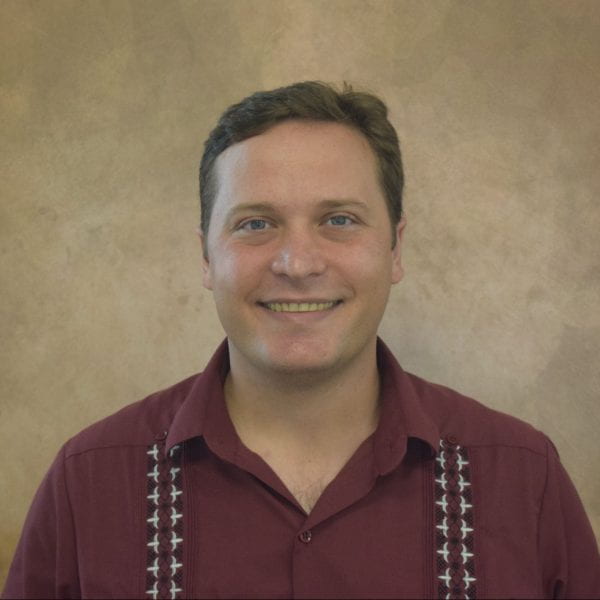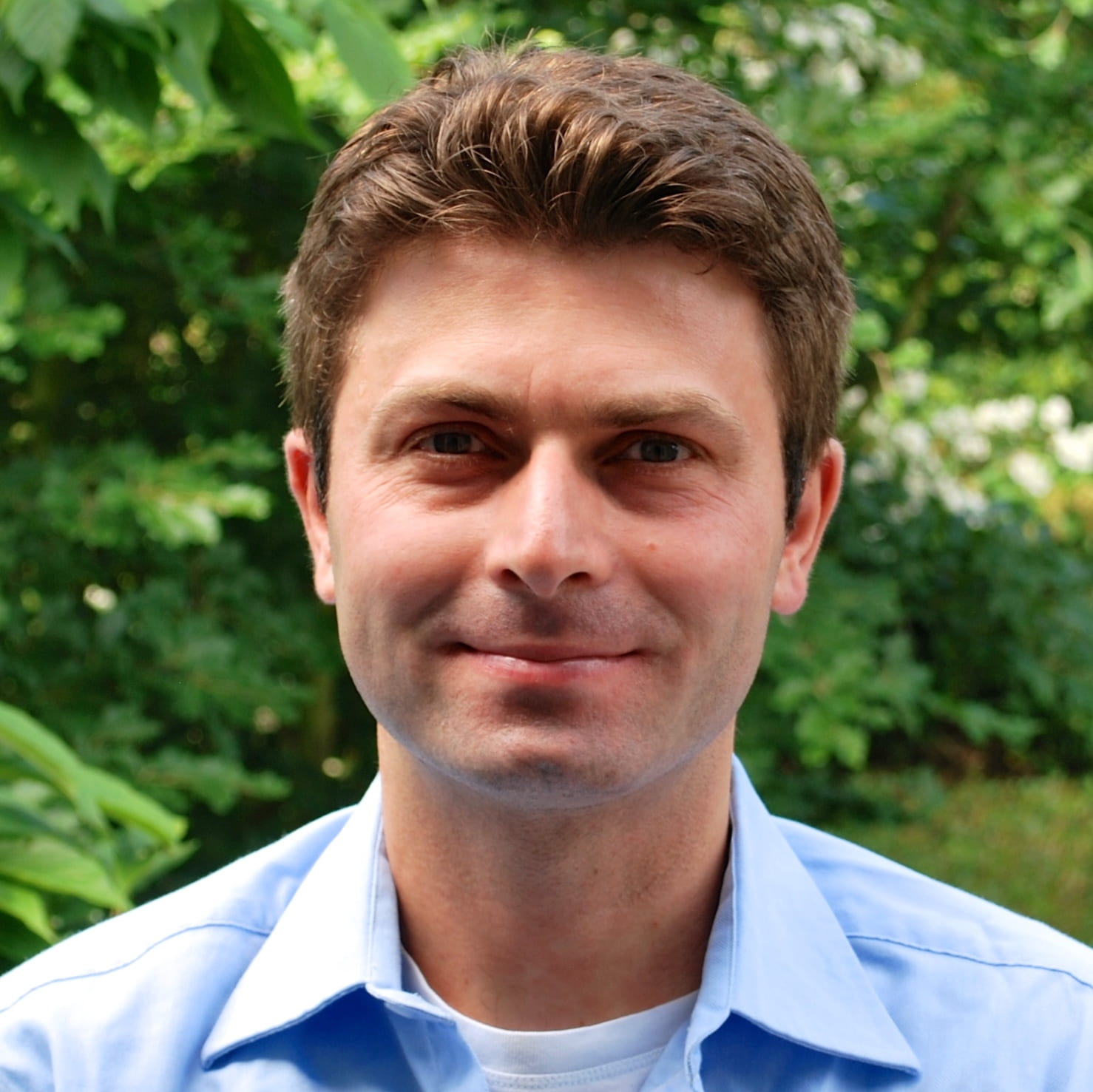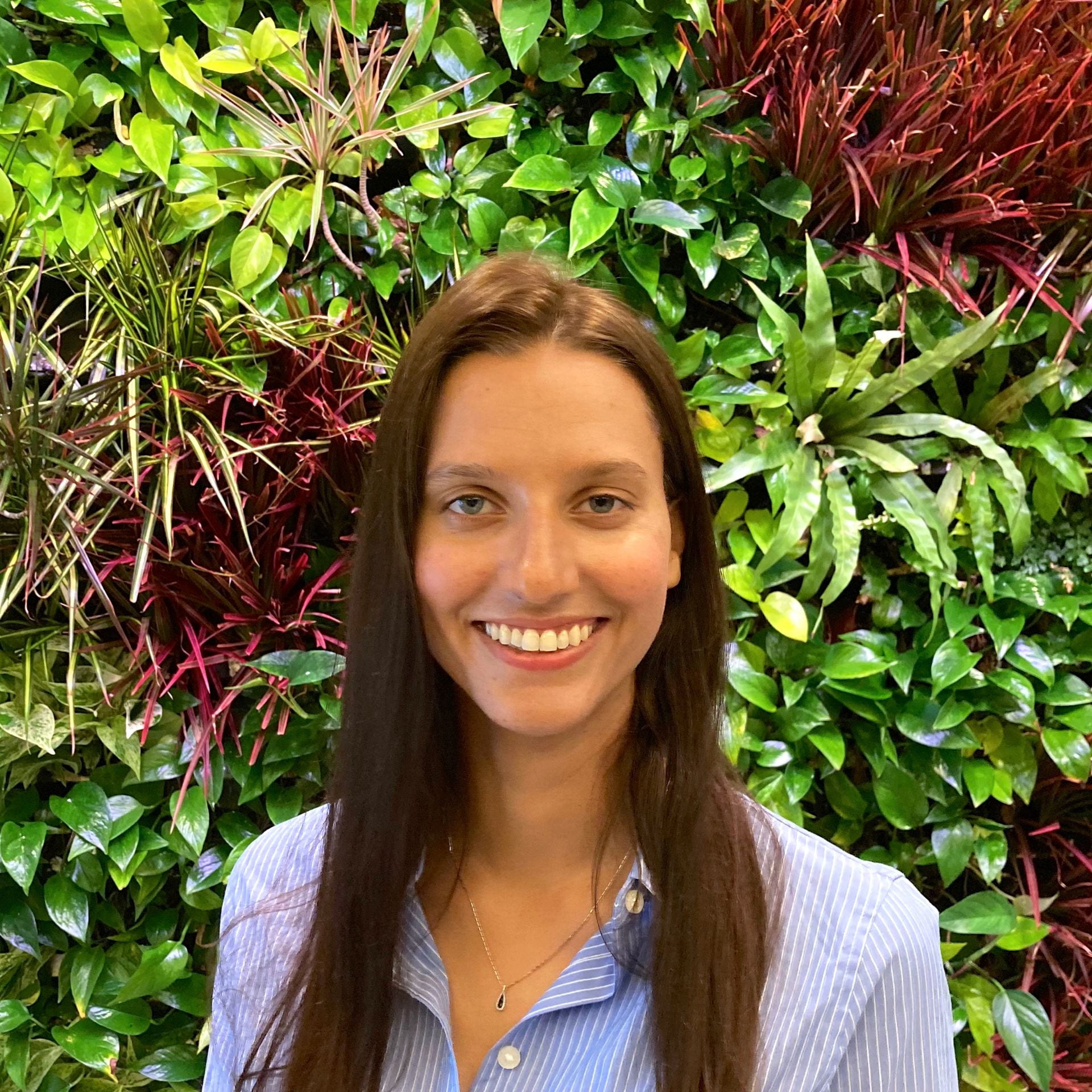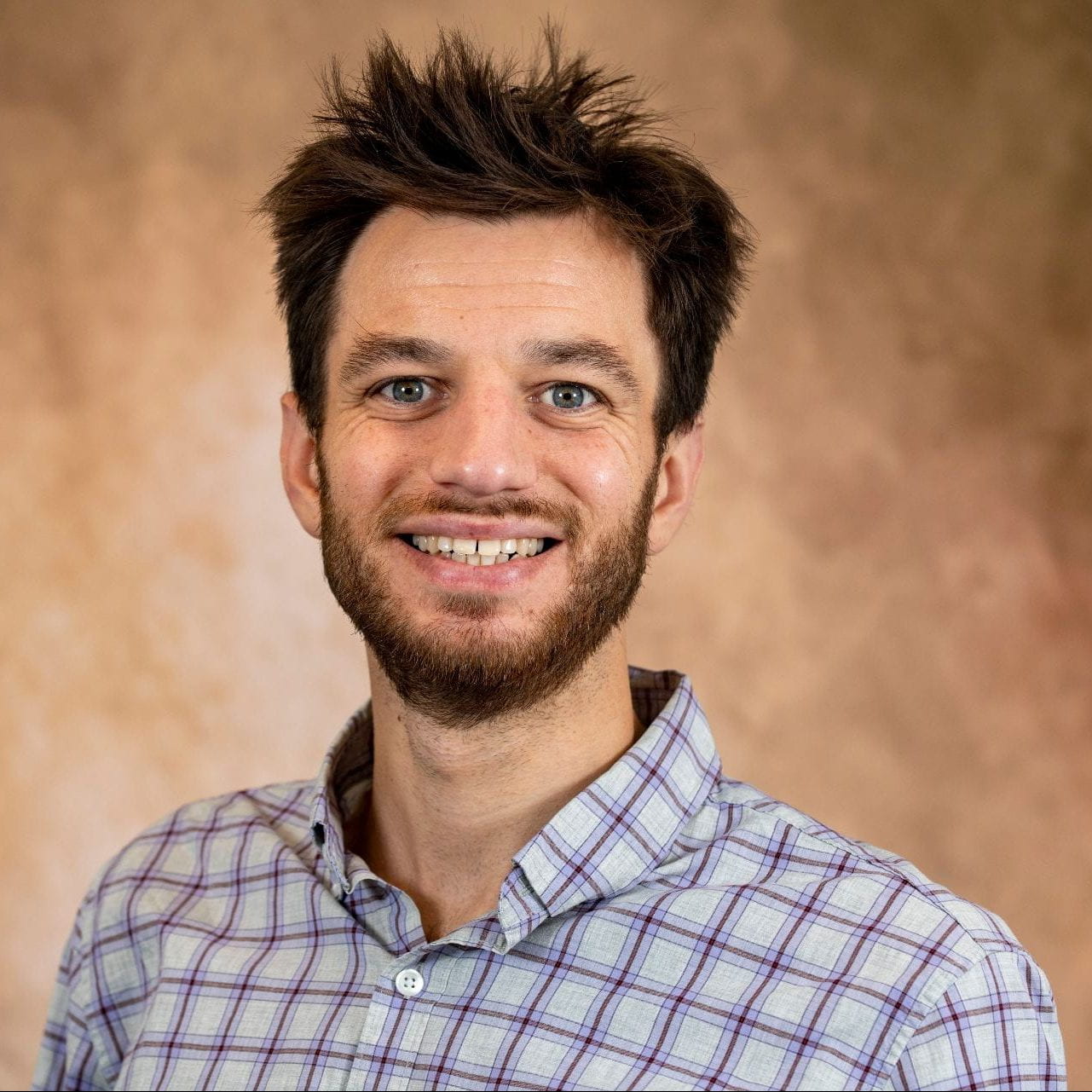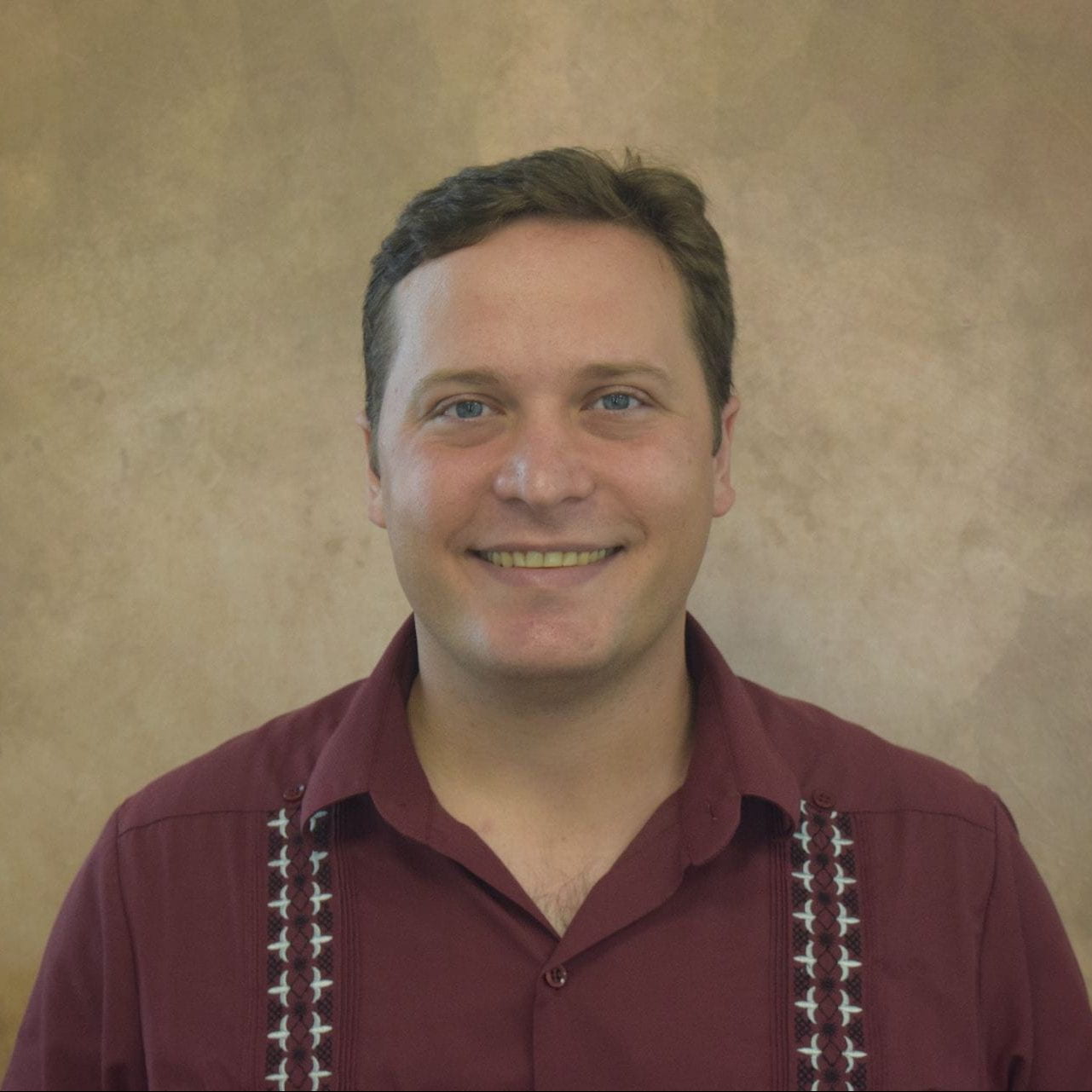Mansueto Institute Lunch Colloquium
The Mansueto Institute hosts a Colloquium during the academic year featuring speakers from a variety of fields on the latest research related to cities, in a hybrid format. Talks take place on Tuesdays at the Mansueto Institute, 1155 E. 60th Street, on the University of Chicago campus, with lunch provided, or via Zoom, unless otherwise noted. Watch past colloquium talks on our Youtube channel, and subscribe to our newsletter to receive updates about upcoming events.
Upcoming Talks
Learn more about our upcoming colloquium talks in 2023-2024, including our Urban Innovators Colloquium, where we bring in practitioners outside of academia to speak about issues impacting cities.
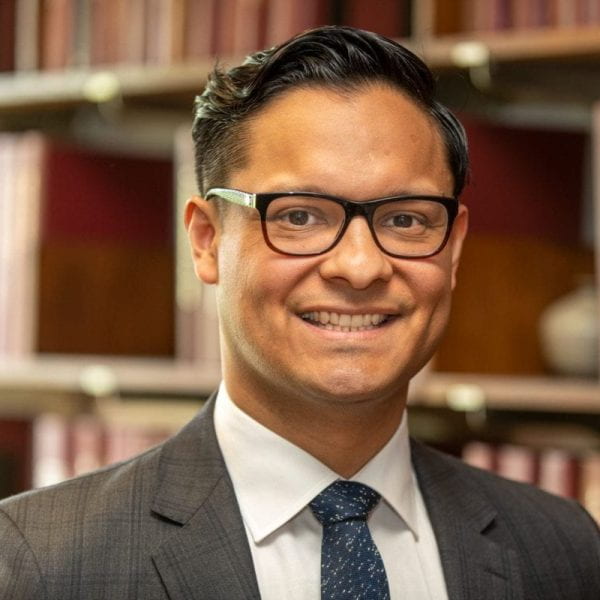
Barriers and Facilitators of Public Safety Innovation
Robert Vargas, Associate Professor of Sociology; Deputy Dean at the University of Chicago
Tuesday, May 7, 2024, 12:30 PM
Hybrid Event: 1155 E. 60th St., Room 101 (Mansueto Lounge), or via Zoom
The killing of George Floyd in 2020 ignited an unprecedented outpouring of support for municipal investment in policing alternatives. In this presentation, I share findings from several papers in progress describing underestimated barriers to public safety innovation stemming from academia and philanthropy. I will also share some preliminary results on the positive effects of social movement activity and policy learning networks for implementing policing alternatives like mental health crisis response teams and offices of violence prevention. This research agenda, which will eventually become a book, argues that the fields of science studies and political economy offer untapped ideas for improving public safety.
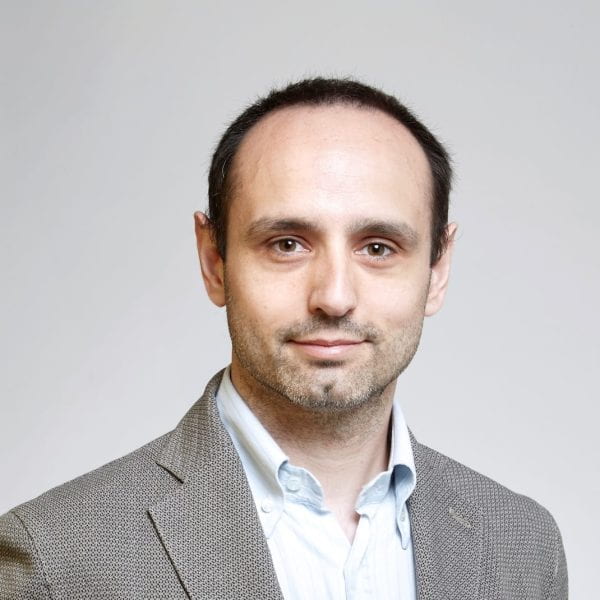
Colloquium Talk
Riccardo Di Clemente, Associate Professor in the Network Science Institute at Northeastern University London
Tuesday, May 14, 2024, 12:30 PM
Hybrid Event: 1155 E. 60th St., Room 101 (Mansueto Lounge), or via Zoom
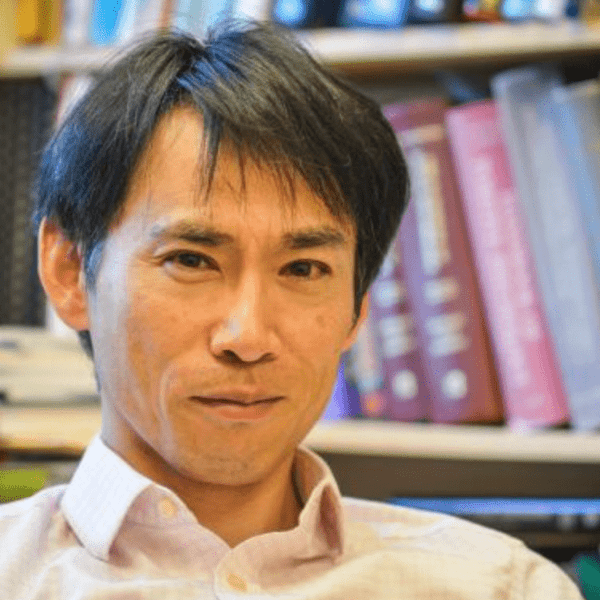
Colloquium Talk
Shige Oishi, Marshall Field IV Professor in the Department of Psychology, University of Chicago
Tuesday, May 21, 2024, 12:30 PM
Hybrid Event: 1155 E. 60th St., Room 101 (Mansueto Lounge), or via Zoom
Spring Quarter 2024 – Past Talks

Bicycling in Low- and Middle-Income Countries’ Cities: Exploratory Research on Use, Experiences, Access, and Barriers in India, Bangladesh, and Ghana
Smruthi Bala Kannan, Postdoctoral Scholar, Department of Public Health Sciences, BSD, University of Chicago
Abstract and More Information
Tuesday, April 16, 2024, 12:30 PM
Hybrid Event: 1155 E. 60th St., Room 101 (Mansueto Lounge), or via Zoom
Bicycling is described in Global-North led urban planning recommendations as a lynchpin between human health and environmental sustainability. Carrying this intent forward, low- and middle-income countries (LMIC) are often called on to build bicycle friendly urban infrastructures and policies. However, due to the complexities of studying the diverse and diffuse phenomenon of bicycling in these cities, little data is available on the place of bicycles in these cities and the demographics and transportation characteristics of current bicyclists. In this talk, I present our learnings from an exploratory mixed-methods research project on bicycling in Delhi, Chennai (India), Dhaka (Bangladesh), and Accra (Ghana). We describe socio-economic, geographic, temporal, gender and age characteristics of current bicyclists drawing from survey, observation, and interview data. Triangulating this data with stakeholder interviews in the bicycle retail and market network and a supplementary policy analysis, we reflect on the contextual factors shaping bicyclists’ experience and perception of their place in the city’s roads, and the access and barriers to bicycling in these cities. The talk reflects on the complexities and potential pathways to support large increases in bicycling in LMIC cities while aligning environmental concerns and active modes of transportation with equity, comfort, and safety for road users.
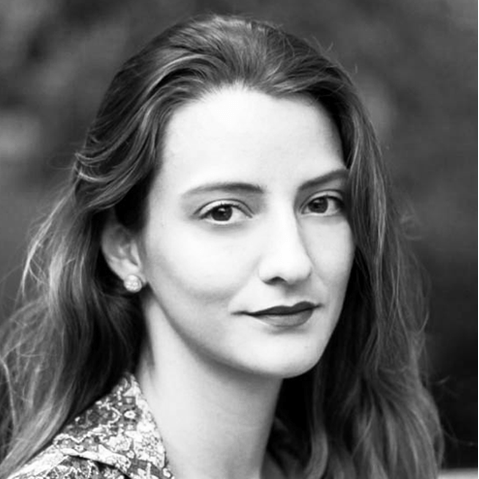
The 15-Minute City Quantified Using Human Mobility Data
Arianna Salazar-Miranda, Mansueto Institute Postdoctoral Fellow, University of Chicago
Abstract and More Information
Tuesday, April 2, 2024, 12:30 PM
Hybrid Event: 1155 E. 60th St., Room 101 (Mansueto Lounge), or via Zoom
Amid rising congestion and transport emissions, policymakers are embracing the ‘15-minute city’ model, which envisions neighborhoods where basic needs can be met within a short walk from home. Prior research has primarily examined amenity access without exploring its relationship to behavior. We introduce a measure of local trip behavior using GPS data from 40 million US mobile devices, defining ‘15-minute usage’ as the proportion of consumption-related trips made within a 15-minute walk from home. Our findings show that the median resident makes only 14% of daily consumption trips locally. Differences in access to local amenities can explain 84% and 74% of the variation in 15-minute usage across and within urban areas, respectively. Historical data from New York zoning policies suggest a causal relationship between local access and 15-minute usage. However, we find a trade-off: increased local usage correlates with higher experienced segregation for low-income residents, signaling potential socio-economic challenges in achieving local living.
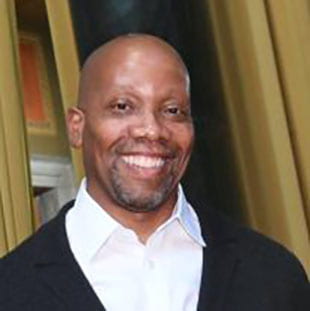
Inclusionary Zoning in New York City: Trojan Horse or Antidote to Gentrification?
Crown School & Mansueto Institute Colloquium
Lance Freeman, James W. Effron University Professor of City and Regional Planning and Sociology, University of Pennsylvania
Abstract and More Information
Thursday, March 21, 2024,
Talk from 3:00 – 4:00 PM with in-person reception to follow from 4:00 – 5:00 PM
Hybrid Event: 1155 E. 60th St., Room 142, or via Zoom
The Crown Family School of Social Work, Policy, and Practice and the Mansueto Institute for Urban Innovation are pleased to offer a cross-disciplinary talk featuring Lance Freeman, James W. Effron University Professor of City and Regional Planning & Sociology at the University of Pennsylvania. Lance studies how neighborhoods change and evolve over time, the role neighborhoods play in people’s lives, and he is exploring how we can use social media and other new technologies as tools to study neighborhoods. In this talk, Lance will discuss a study examining the early impacts of New York City’s Mandatory Inclusionary Housing (MIH) program, considering whether it successfully incentivizes plans for new development, and if MIH functions as a signal for an up-and-coming neighborhood, thereby triggering rising housing costs. By employing an Adjusted Interrupted Time Series approach with controls for time trends, we compare neighborhoods exposed to the adoption of MIH with those not exposed, both before and after the adoption of MIH, to determine whether MIH impacts the designated neighborhood. We find some evidence that the incentives offered by MIH are spurring new housing development. However, we fail to find evidence that MIH impacts the cost of housing, as we observe no indication of either rising sales prices or rising rents in MIH zones. Our study was completed just as the COVID-19 pandemic began. Thus, the long-term impacts of MIH deserve further scrutiny.
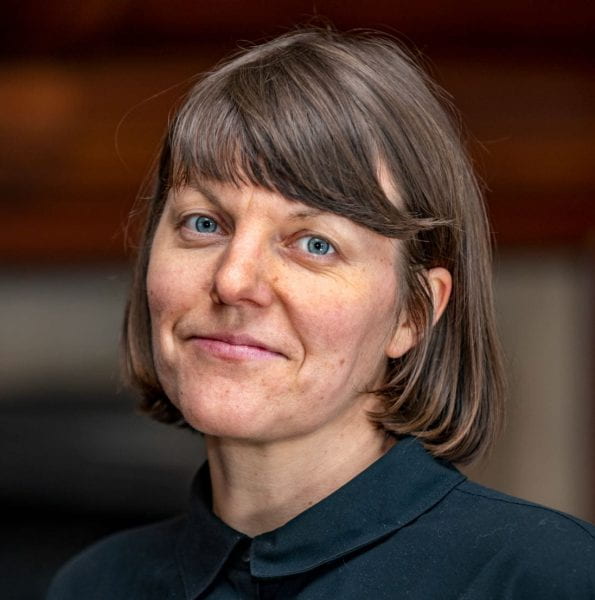
Building Inspectors and Aging Housing Stock
Robin Bartram, Assistant Professor Crown Family School of Social Work, Policy, and Practice, University of Chicago
Abstract and More Information
Tuesday, March 19, 2024, 12:30 PM
Hybrid Event: 1155 E. 60th St., Room 101 (Mansueto Lounge), or via Zoom
The presentation will overview my book Stacked Decks: Building Inspectors and the Reproduction of Inequality as well as detail some new work on housing and the environment in Chicago and New Orleans. Stacked Decks reveals surprising patterns in the judgment calls building inspectors make when deciding whom to cite for building code violations. These predominantly white, male inspectors largely recognize that they work within an unequal housing landscape that systematically disadvantages poor people and people of color through redlining, property taxes, and city spending that favor wealthy neighborhoods. Stacked Decks illustrates the uphill battle inspectors face when trying to change a housing system that works against those with the fewest resources. My new work on housing and the environment explores assumptions about how long buildings last.
Winter Quarter 2024 – Past Talks
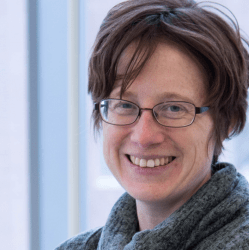
Personal Exposure to Particulate Matter: A Focus on Cooking Fuels in Rwandan Homes and What That Teaches Us About Exposure in Cities
Cheryl Weyant, Mansueto Postdoctoral Fellow and Department of Geophysical Sciences in the Physical Sciences Division Postdoctoral Scholar, University of Chicago
Abstract and More Information
Tuesday, March 5, 2024, 12:30 PM
Hybrid Event: 1155 E. 60th St., Room 101 (Mansueto Lounge), or via Zoom
Millions of deaths in lower income countries are attributed to pollutant exposure from cooking fuels. Previous studies show that transitions to cleaner fuels can reduce pollutant exposures in rural areas, but the impacts in urban areas are not known. Our study resolves this disconnect by measuring 24-hour fine particulate matter (PM2.5) and carbon monoxide (CO) exposures in the context of an urban charcoal to liquified petroleum gas (LPG) and pellet fuel transition ongoing in Gisenyi, Rwanda. Our results show that PM2.5 exposure was similar for LPG and pellet users (p > 0.05), and both reduced the geometric mean PM2.5 exposure by about 15%, or 20 µgm-3 compared to charcoal users. However, exposures were highly variable for all fuel users and modeling suggested that cooking fuel had a relatively small impact on exposure. Clean fuel users had exposures that were well above healthy levels (106 µgm-3 for pellet users and 107 µgm-3 for LPG users). High background concentrations (60 µgm-3) contributed to, but did not entirely explain, elevated exposures of clean fuel users. CO reductions for clean fuel users were strongly significant but the magnitude of the impact was small (1.2 ppm for pellets and 1.9 ppm for LPG). This study suggests that urban charcoal users are likely to have limited exposure reductions from a clean fuel transition.
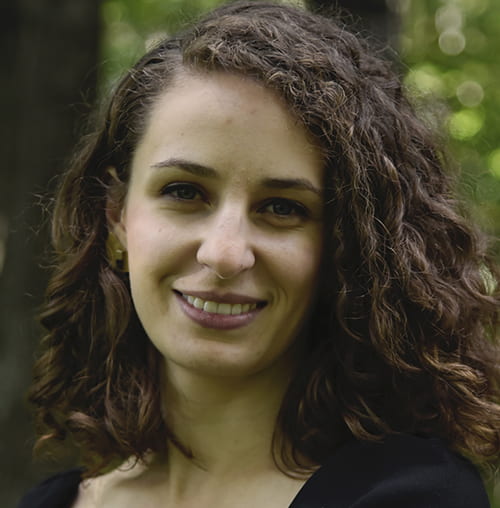
Learning from The Chicago Neighborhood Project: Preliminary Insights from a Crowdsourced Mapping Effort
Lydia Wileden, Mansueto Institute and Social Sciences Division Postdoctoral Fellow, University of Chicago
Abstract and More Information
Tuesday, February 6, 2024, 12:30 PM
Hybrid Event: 1155 E. 60th St., Room 101 (Mansueto Lounge), or via Zoom
Back in the 1920s, University of Chicago researchers helped divide the city into Community Areas. These 75 (and later, 77) discrete geographies have been used for the last century to define and measure parts of Chicago. Despite their utility, residents, policymakers, and researchers acknowledge that Community Areas conceal the city’s smaller, vibrant, and varied neighborhoods and can’t account for the emergence of new neighborhoods or how community boundaries have changed over time. Moreover, little evidence exists connecting residents’ perceptions of and experiences navigating the city to long-ago-drawn Community Area boundaries. To better capture contemporary neighborhoods, the Chicago Neighborhood Project turned to the expertise of Chicago residents. We conducted a crowdsourced survey (chicago-neighborhoods.com), inviting all Chicago residents to help redefine Chicago’s mosaic of neighborhoods for the first time in decades. In this talk, we detail the rollout of the Chicago Neighborhood Project, highlighting insights gained from the field and the feedback of our 4,700 survey participants. We offer a first look at the data, including preliminary insights into patterns of consistency and variation in neighborhood boundary definitions. We also explore whether and how individual and neighborhood characteristics are reflected in perceptions of the size and quality of neighborhoods.
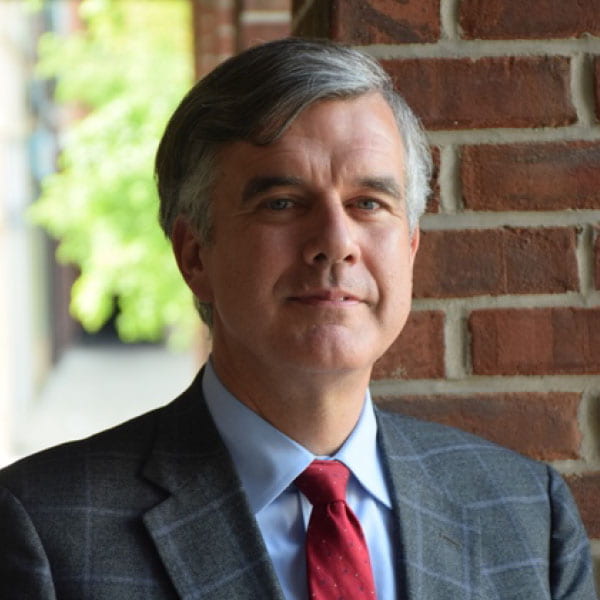
The Future of High Speed Rail in the Midwest and Beyond
Urban Innovators Colloquium
Rick Harnish, Executive Director, High Speed Rail Alliance
Abstract and More Information
Tuesday, January 30, 2024, 12:30 – 1:30 PM
Hybrid Event: 1155 E. 60th St., Mansueto Lounge, or via Zoom

Can Chicago Gangs be Studied Through Crowd-Sourced Online Data?
Riley Tucker, Mansueto Institute, Data Science Institute, and Department of Psychology Postdoctoral Fellow, University of Chicago
Abstract and More Information
Tuesday, January 23, 2024, 12:30 – 1:30 PM
Hybrid Event: 1155 E. 60th St., Mansueto Lounge, or via Zoom
Scholars have observed that contemporary gang activity has shifted to the “digital streets” of social media. As technological shifts have altered the way that gang-affiliated individuals interact, broader social changes have made illicit businesses less profitable, disrupting traditional gang structures. In response, gang-affiliated people in Chicago have begun pursuing online fame by becoming “Drill rappers” who publish music videos describing gang violence. Despite evidence that drill rappers over-represent the level of violence in their lives, fans of drill rap have created online spaces to discuss gang violence in highly detailed ways. To better understand the quality of information captured through these communities, this project presents a natural language processing approach to studying gangs through the lens of the online crowd. By developing a computational approach to “read” post titles, a network has been generated that captures the social relationships among 270 individuals affiliated with 11 Southside gangs. This talk will detail how this approach is designed and validated using police data and will then present an application where the network is analyzed to compare how inter-related gang affiliations and network positions put individuals at risk of dying to gun violence.
Urbanism and Agriculture: Epistemology and Anthropogenic Landscapes
Adrian Chase, Mansueto Postdoctoral Fellow & Department of Anthropology Postdoctoral Scholar
Abstract and More Information
Tuesday, January 9, 2024, 12:30 – 1:30 PM
Hybrid Event: 1155 E. 60th St., Mansueto Lounge, or via Zoom
What is a city? This simple-sounding question has been notoriously difficult to answer. Scholars have used a multitude of definitions and methods from multiple disciplinary perspectives. Lack of specificity in what is and what is not ‘urban’ spills over into considering the areas around cities. For example, the 2020 US Census simply defines “rural” as “not urban.” More than just a semantic issue, the difficulty in pinning down a single, cross-cultural definition of a city ties into long-term changes in perception about human-environmental interactions and anthropogenic landscapes. The concepts of urban, rural, hinterland, and agricultural are all entangled with how – and why – consideration of cities and agriculture have changed over time. Understanding how we know what we know and historical contingencies have a direct implication on how we contemplate anthropogenic landscapes of people, agriculture, and cities.
Fall Quarter 2023 – Past Talks

A Cognitive View of Policing
Oeindrila Dube, Philip K. Pearson Professor, University of Chicago – Harris School of Public Policy
Abstract and More Information
Tuesday, November 28, 12:30 – 1:30 PM
Hybrid Event: 1155 E. 60th St., Mansueto Lounge, or via Zoom
What causes adverse policing outcomes, such as excessive uses of force and unnecessary arrests? Prevailing explanations focus on bad actors among officers or deficient regulations and oversight. Here, we introduce a new, overlooked perspective. We suggest that the cognitive demands inherent in policing can undermine officer decision-making. Unless officers are prepared for these demands, they may jump to conclusions too quickly without fully considering alternative ways of seeing a situation. This can lead to adverse policing outcomes. To test this perspective, we created a training program that teaches officers to more deliberately consider different ways of interpreting the situations they encounter. We evaluated this training using a randomized controlled trial with 2,070 officers from the Chicago Police Department. In a series of lab assessments, we find that treated officers were significantly more likely to consider a wider range of evidence and develop more explanations for subjects’ actions. Critically, we also find that trained officers performed differently in the field: They used force less often, made fewer discretionary arrests, and were less likely to arrest black civilians, while their overall activity levels remained unchanged. Moreover, trained officers were less likely to be injured on duty. Our results highlight the value of considering the cognitive aspects of policing and demonstrate the power of using behaviorally informed approaches to improve officer decision-making and policing outcomes.
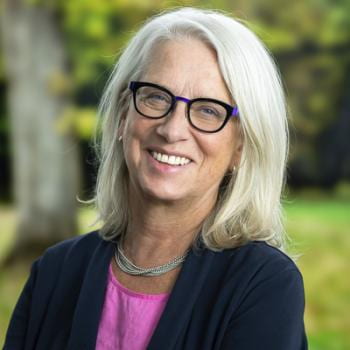
Making Communities Relevant to Climate Science, and Climate Science Relevant to Communities: The Case of CROCUS
Cristina Negri, Director, Environmental Science Division, Argonne National Laboratory
Abstract and More Information
Tuesday, October 31, 12:30 – 1:30 PM
Hybrid Event: 1155 E. 60th St., Mansueto Lounge, or via Zoom
The U.S. Department of Energy has funded four Urban Integrated Field Laboratories (UIFL), with specific goals of developing the science tools to understand the feedbacks between climate and urban communities. How does a city impact its regional climate? How does climate impact urban areas at the granular scale? How do we understand the effects of decisions related to climate solutions on the community system and on the climate system? In this talk I will discuss our experience in developing the scientific program for Chicago’s very own UIFL, Community Research on Climate and Urban Science, or CROCUS, to unravel these dynamics while staying true to community needs and providing a replicable blueprint to address the needs of communities and science elsewhere. The objective of this meeting is to develop opportunities for collaborations between physical sciences and social and economic sciences to advance CROCUS and urban climate science.

Data Analytics for Urban Community Planning
Urban Innovators Colloquium
Joseph Minicozzi, Founder and Principal, Urban3
Abstract and More Information
Tuesday, October 24, 12:30 – 1:30 PM
Hybrid Event: 1155 E. 60th St., Mansueto Lounge, or via Zoom
Throughout the year, the Mansueto Institute for Urban Innovation will bring leading practitioners to campus to discuss their work. This year, we kick off with Joseph Minicozzi, AICP, founder and principal of Urban3. He will explain and help visualize market dynamics created by tax and land use policies through award winning geospatial analytic tools and graphic story-telling. Minicozzi’s compelling message is that subsidizing sprawling development is not fiscally sustainable. He will share insights about the intersection of data analytics, urban and community planning, and the opportunities for communities to utilize local data to plan for their futures.
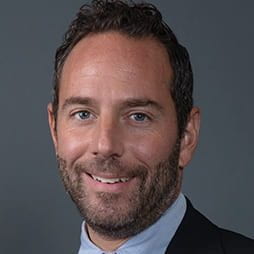
Blockbusting and the Challenges Faced by Black Families in Building Wealth through Housing in the Postwar United States
Dan Hartley, Senior Economist, Federal Reserve Bank of Chicago
Abstract and More Information
Tuesday, October 17, 12:30 – 1:30 PM
Hybrid Event: 1155 E. 60th St., Mansueto Lounge, or via Zoom
This talk will focus on the impacts of blockbusting, i.e. large-scale racial turnover of urban neighborhoods orchestrated by realty professionals using aggressive and discriminatory practices. In large U.S. cities, Hartley will compare neighborhoods subjected to blockbusting to other similar neighborhoods mostly in the 1950s-1960s. In Hartley’s research, he and colleagues find that blockbusting caused substantially lower house values in 1980 and 1990. To understand the mechanisms, they are analyzing property-level data in one neighborhood of Baltimore, Maryland. They’ve found that new residents that purchased their properties through blockbusters were charged higher prices and had higher foreclosure rates than new residents that purchased directly from existing property owners.
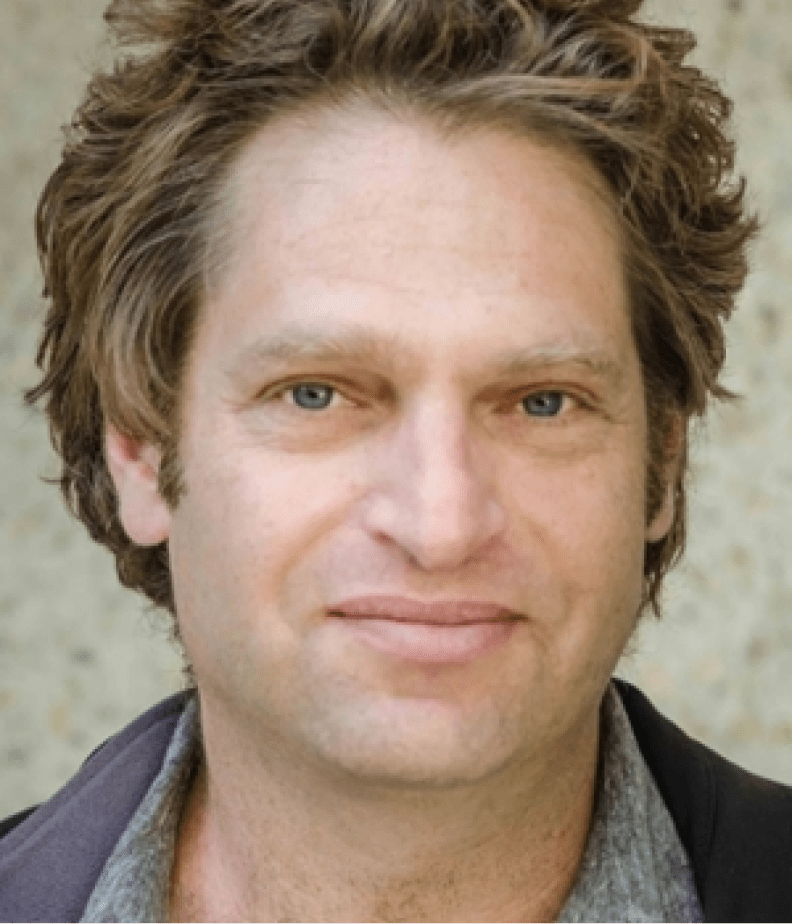
Why Social Mobilization Is Essential For Confronting the Climate Crisis And What Academic Psychologists Can Do
co-hosted with the Department of Psychology
Adam R. Aron, Professor of Psychology, University of California, San Diego
Abstract and More Information
Thursday, September 28
Talk: 3:30 – 5:00 PM
Reception: 5:00 – 6:00 PM
Hybrid Event: 1155 E. 60th St., Room 142, or via Zoom
Global heating appears to be accelerating and to prevent it from disrupting organized existence we must quickly and substantially reduce the burning of fossil fuels, reduce consumption and demand, and achieve a just transition to renewable energy. Local decision makers, including university chancellors and city and state officials generally have not, and will not, implement policy in a timely way to leave fossil fuels in the ground without being impelled by a large-scale social mobilization. I will speak about social mobilization from my perspective as an academic who quit a career in cognitive neuroscience to focus on the climate crisis. I will provide some examples of successful social mobilization from our organizing efforts within the University of California and the overlap with psychology research. I will argue that insofar as the fields of environmental and social psychology have concerned themselves with the climate crisis, they have mostly done so through studies of individual rather than collective action. Even when these fields focus on collective action, they have almost entirely been limited to cross-sectional survey studies (often online), and self-reported actions or hypothetical intentions. Instead I will discuss how we are trying to pioneer a new kind of field study: we teach research participants to organize for climate action and study the psychological factors that predispose them and make them successful.
Spring Quarter 2023 – Past Talks
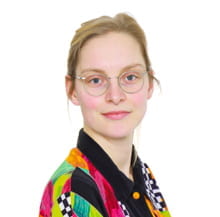
The City as a Place for Just and Sustainable Transformation: Learnings from the Case of Amsterdam
Charlotte Cator, PhD fellow at Copenhagen Business School
Abstract and More Information
Wednesday, May 31, 12:30 PM
Hybrid Event: 1155 E. 60th St., Room 101 (Mansueto Lounge), or via Zoom
Visions and strategies for the city as a key place for just and sustainable transformation are gaining rapid ground in a time of ever-more pressing environmental and social challenges. In this presentation, I explore the potential of the city as a place for such transformation, by drawing on the findings of my ongoing PhD project. In the project, I study the case of Amsterdam, whose city council recently initiated a circular economy strategy that foregrounds the role of citizens and community organisations in its implementation. Through a qualitative approach, I aim to understand how citizen-driven initiatives promoting alternative forms of economic, social, and political organising get to play a role in shaping the future of Amsterdam. I consider the relevant actors and their practices, and I situate these developments within a wider political-economic context, to understand the mechanisms through which sustainable and inclusive urban futures might be enacted.
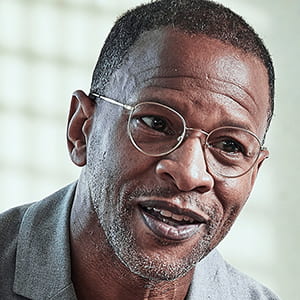
What if? Mining for Equitable Development and the Building of Mutualist Markets
Shawn Rickenbacker, Director, J. Max Bond Center and Associate Professor, The Bernard and Anne Spitzer School of Architecture, City University of New York
Abstract and More Information
Wednesday, May 17, 12:30 PM
Hybrid Event: 1155 E. 60th St., Room 101 (Mansueto Lounge), or via Zoom
Due to previous housing segregation practices like “redlining,” many underprivileged urban communities continue to face systematic economic violence. This has contributed to a prolonged national scarcity of affordable housing and displacement as a result of limited land resources, market speculation, and other factors. In this framework, modern zoning is a crucial policy that also directs the majority of development practices. However, the findings suggest that zoning and the policies that support it protect and constrain the establishment of important spatial morphologies, resulting in an even more unequal distribution of spatial resources. These representational methods and procedures create a kind of artificial spatial scarcity in addition to being discriminatory practices that uphold systemic geographic imbalances. Concerns about spatial justice and reparative justice continue to be crucial in identifying alternatives to current policies that may provide more equitable outcomes. This presentation will explore how policy reform coupled with emergent spatial morphologies of housing development might help shape and materially negotiate new scalable concepts of spatial and reparative justice through an analysis and case studies of Harlem, New York’s housing challenges, and assigned zoning policies. The talk will suggest an expanded role for these spatial justice issues using investigative policy review and reform, planning, and design—a role geared toward encouraging meaningful policy debate and the regeneration and redistribution of spatial resources with the goal of offsetting or slowing forms of gentrification and building mutualist markets.
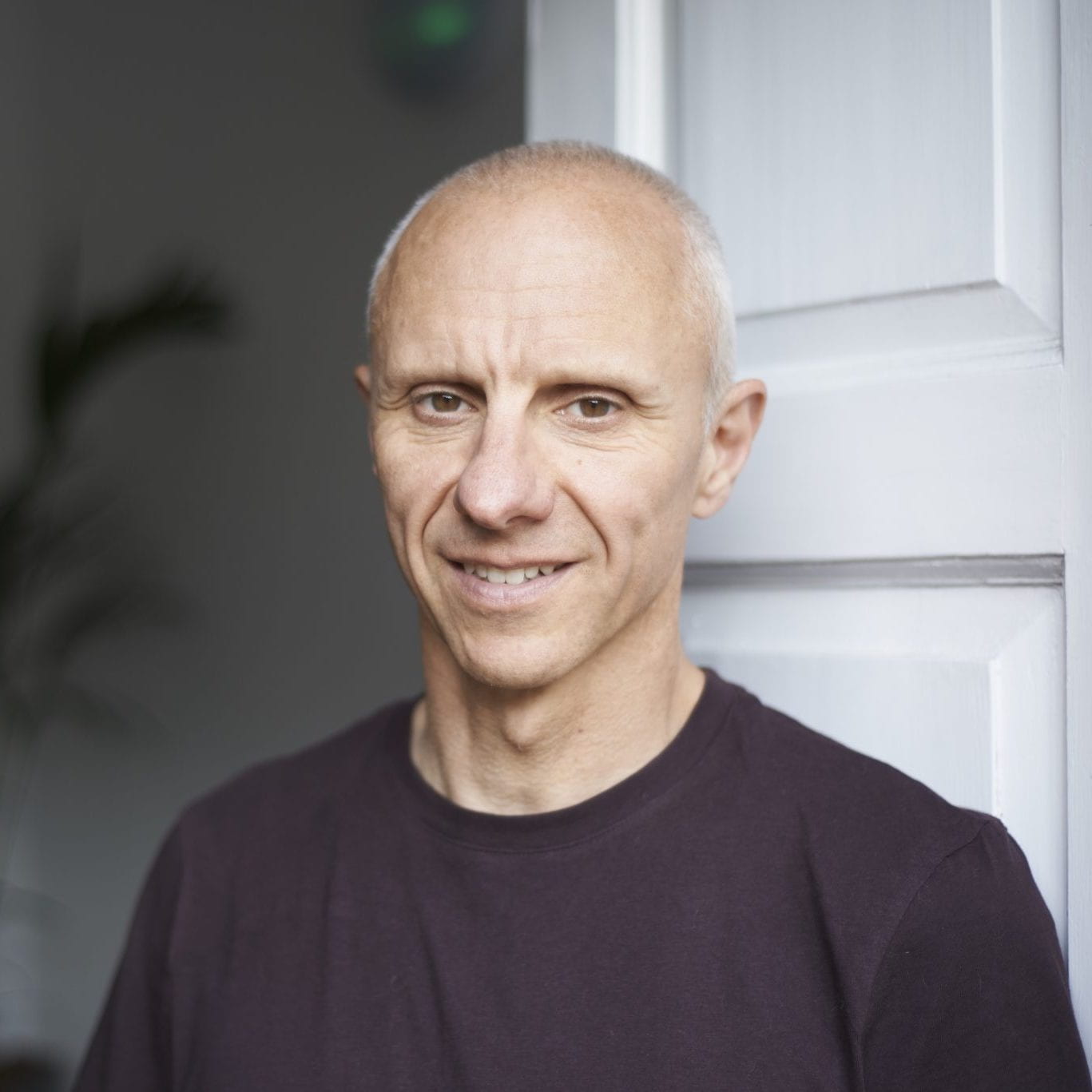
Adapting to the Urban Environment: Studies of Social Deprivation in the UK
Daniel Nettle, Professor of Behavioural Science at Newcastle University; Researcher in the Evolution and Social Cognition Team at the École Normale Supérieure-PSL
Urban Cognition Series
Abstract and More Information
Wednesday, May 3, 12:30 PM
Hybrid Event: 1155 E. 60th St., Room 101 (Mansueto Lounge), or via Zoom
The behaviour of people living in socially deprived urban areas is often different from that of their affluent neighbours. They eat different food, trust one another less, have different priorities, and different valuations of the future. These behaviours are often stigmatized as irrational or invoked as the causes of their poverty. But there is another possible perspective: people make generally reasonable adaptations to the actual environments they live in and the material constraints they face. I will illustrate this general thesis with theoretical models and data from my research in the UK. I will argue that understanding people’s psychological adaptation to their context requires much more detailed data on people’s experienced environments than we typically gather, and a shift away from seeing human cognition as flawed or deficient, and towards seeing it as flexible and ‘rational under the circumstances’.
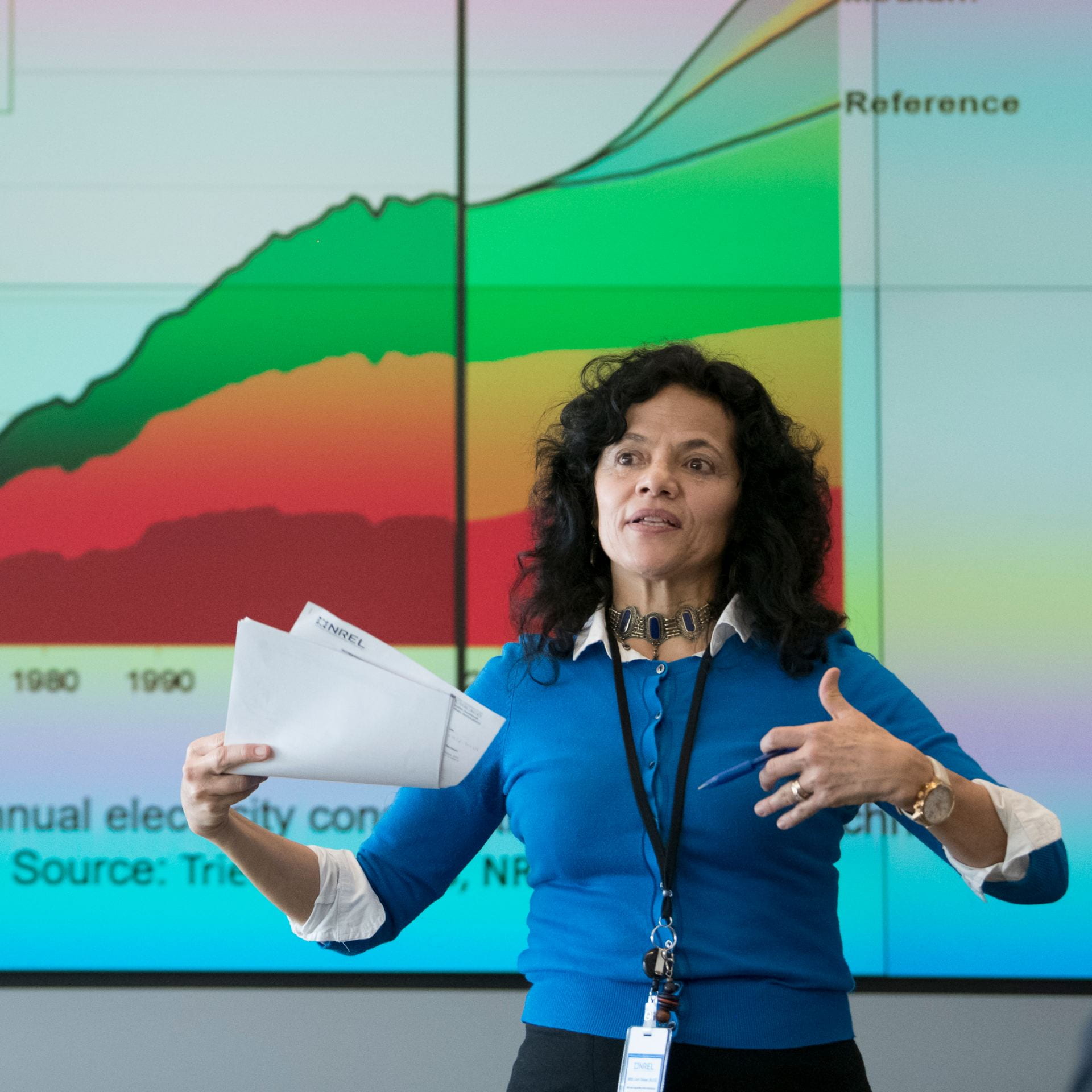
Unleashing the Transformative Potential for Energy Transitions in Cities – Lessons from Los Angeles
Paty Romero-Lankao, Senior Research Scientist and Distinguished Member of Research Staff, National Renewable Energy Laboratory
Abstract and More Information
Wednesday, April 19, 12:30 PM
Hybrid Event: 1155 E. 60th St., Room 101 (Mansueto Lounge), or via Zoom
Now proven to be essential agents of change globally, cities occupy a central role in societal responses to climate change. In its 5th and 6th reports, the IPCC has endorsed the need for a transformative research agenda on cities and climate. Although growing momentum exists to unleash the transformative potential of urban action, the extent to which current practice can address root causes and connections between unequal urban development and climate change is limited. I draw lessons from social and policy approaches to LA100 Equity Strategies in this presentation. This high social impact project, which involves a community-informed analysis of strategies for Los Angeles, can shed light on how to ensure cities around the world transition to 100% clean energy while also centering on justice and the needs of underrepresented populations.
Developmental Adaptations to Adverse Conditions
Willem Frankenhuis, Associate Professor of Psychology at Utrecht University; Senior Researcher at the Max Planck Institute for Research on Crime, Security and Law
Urban Cognition Series
Abstract and More Information
Wednesday, April 5, 12:30 PM
Hybrid Event: 1155 E. 60th St., Room 101 (Mansueto Lounge), or via Zoom – Speaker will be remote
Some psychologists ask whether a given behavior results from evolution or development. However, all phenotypes result from development. And all development, in turn, results from evolved mechanisms interacting with previous and current contexts. Therefore, all phenotypes have both an evolutionary history and a developmental history. In this talk, I will first conceptualize evolution and development as nested processes operating on different timescales: across generations, some developmental mechanisms are passed on more than others; within generations, these mechanisms tailor individuals to local environments based on their experiences. Using this framework, I will argue that humans have evolved mechanisms for developmental adjustments to several forms of childhood adversity (e.g., exposure to violence, resource insecurity, low parental investment). Such adaptations may include hidden talents, social and cognitive abilities that are enhanced by adversity, and reasonable responses, strategies that respond to the affordances and constraints of adverse conditions. However, to study adaptations, we need clear definitions and measures of the environment. I next discuss environmental statistics, a framework for describing environmental stability and change over space and time. This framework affords building theory and testing ideas about specific dimensions of the environment and developmental adaptations. Taken together, this work contributes to a well-rounded scientific understanding of human development in adverse conditions, which includes not only possible impairments or deficits, but also strengths and strategies. Such a well-rounded view has the potential to inform education, jobs, policy, and interventions that leverage the strengths of people living in adverse conditions.
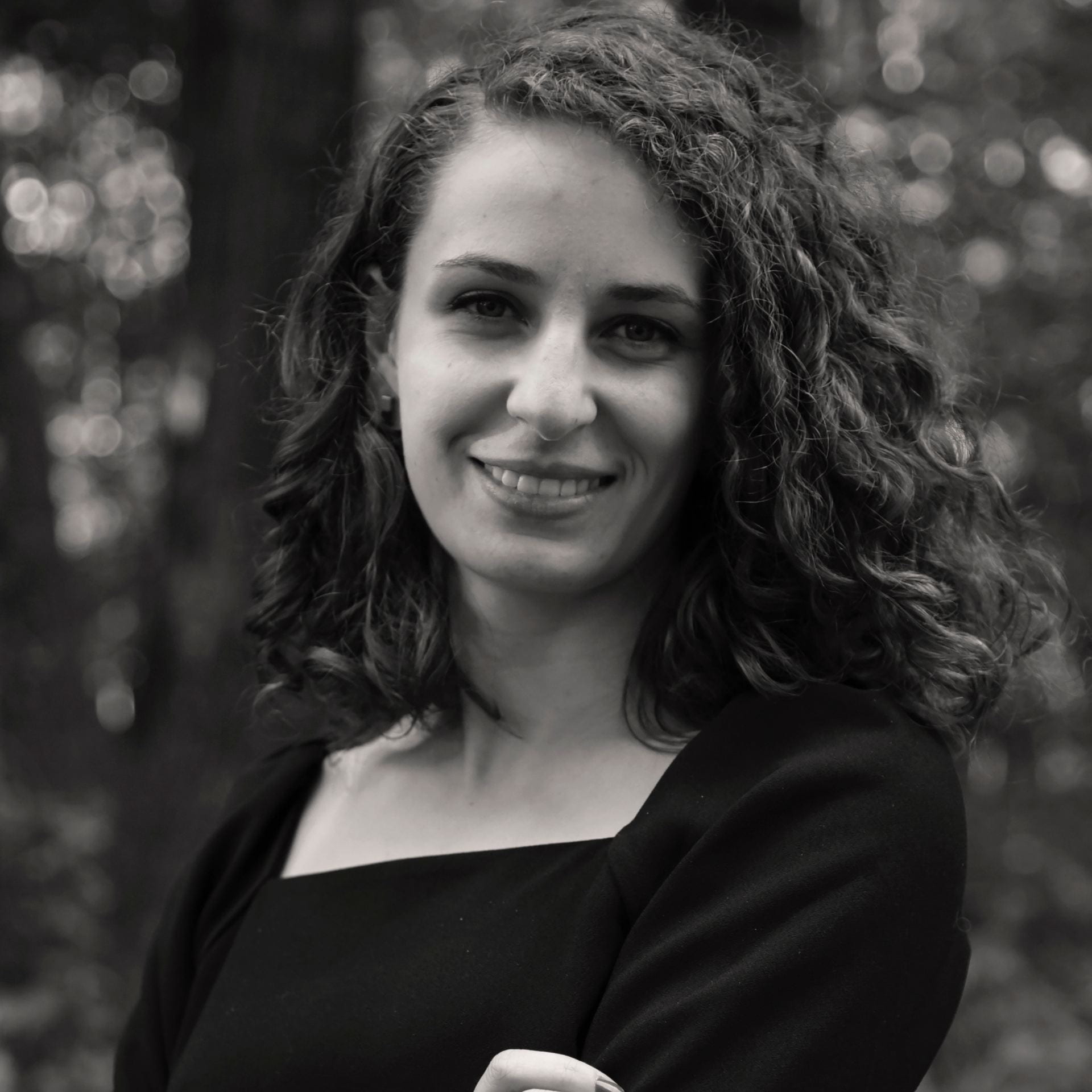
Making Sense of ‘A Sense of Place’: Examining the Collective and Relational Nature of Neighborhood Knowledge
Lydia Wileden, Mansueto Institute and Social Sciences Division Postdoctoral Fellow, University of Chicago
Abstract and More Information
Wednesday, March 29, 12:30 PM
Hybrid Event: 1155 E. 60th St., Room 101 (Mansueto Lounge), or via Zoom
In his seminal work on neighborhood identity, Suttles (1972) argued that neighborhoods are “embedded in a contrastive structure in which each neighborhood is known primarily as a counterpart to some others.” Despite this recognition of the relational nature of neighborhood knowledge, few studies examine how people sort and group neighborhoods or how collective conceptions of neighborhood identity are formed and maintained. One reason for this oversight is a lack of data that simultaneously capture residents’ views of their own neighborhood and other neighborhoods across their city. In this talk, I describe findings and future directions of research that draw on a survey tool developed to capture the relational quality of residents’ knowledge of and experience with neighborhoods in three US cities – Chicago, Los Angeles, and Washington D.C. First, I highlight the utility of this data to explore systematic differences in neighborhood familiarity and the implications of these “blind spots” for urban research. Second, I illustrate how this relational data can be used to develop ecometric measures of communities by examining the collective nature of neighborhood reputation and reputations’ demographic and physical underpinnings. Throughout, I argue that research that embraces the contrastive structure of urban spaces is critical for developing more realistic models of urban behavior and decision-making.
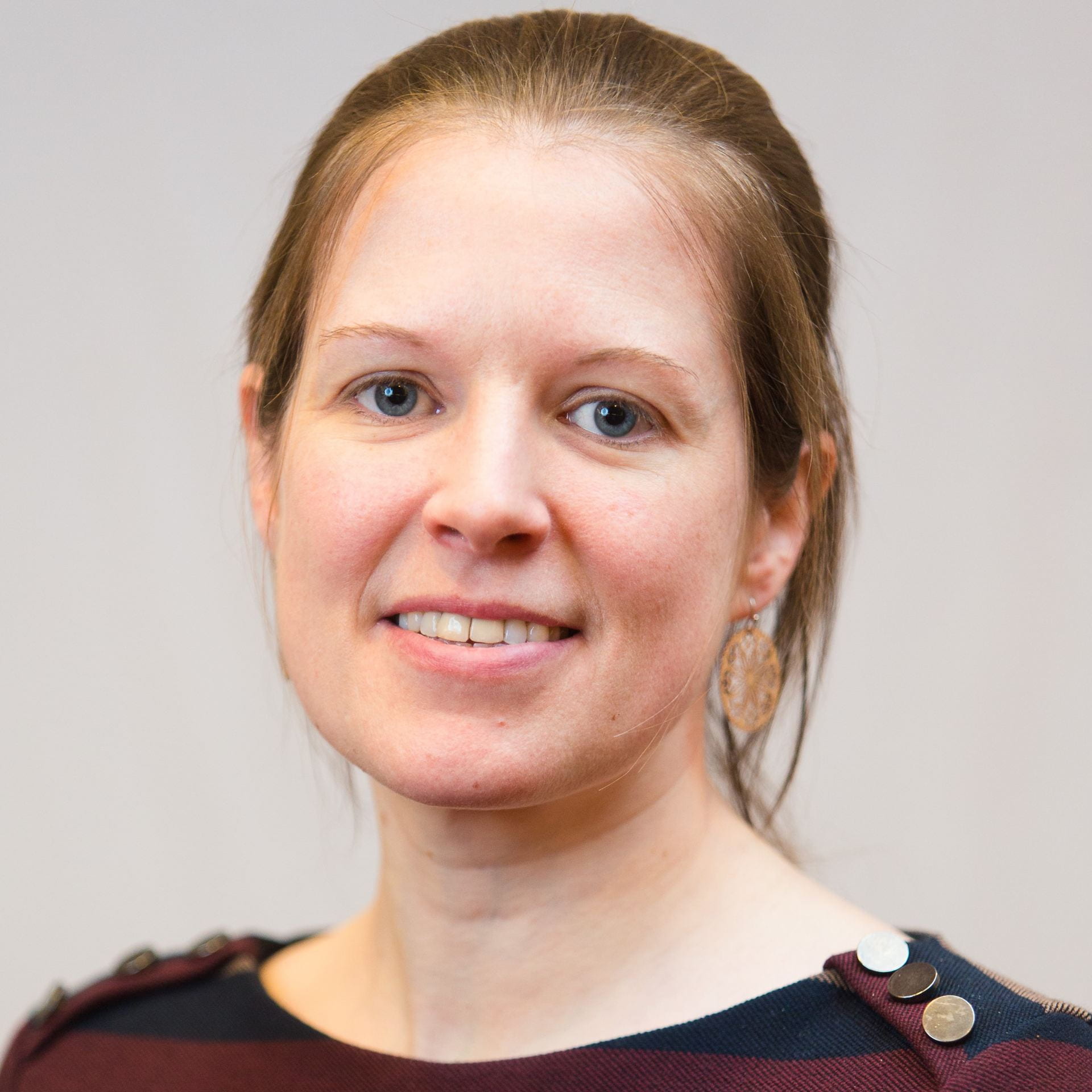
A Socio-Ecological Perspective on Decision-Making in Low-Income Contexts
Jennifer Sheehy-Skeffington, Assistant Professor of Social Psychology, London School of Economics and Political Science
Urban Cognition Series
Abstract and More Information
Wednesday, March 22, 12:30 PM
Hybrid Event: 1155 E. 60th St., Room 101 (Mansueto Lounge), or via Zoom – Speaker will be remote
Behavioural interventions targeting low-income communities tend to focus on eliciting the kind of health, financial, and educational decisions that enhance people’s long-term life outcomes, thereby helping them move away from financial precarity. What has been less considered, until recently, is the influence of the surrounding context of material and social adversity in shaping decision-making in the first place. This talk will outline research taking a socioecological perspective on decision-making in low income contexts, with consideration for interventions that are relevant in contemporary urban settings.
Winter Quarter 2023 – Past Talks
Spatial Network Characteristics of Crime
Alexandra Ciomek, Mansueto Institute Postdoctoral Fellow and Crown Family School of Social Work, Policy, and Practice Postdoctoral Scholar, University of Chicago
Abstract and More Information
Wednesday, February 22, 12 PM
Hybrid Event: 1155 E. 60th St., Room 101 (Mansueto Lounge), or via Zoom
Neighborhoods are a paramount aspect of sociological study and the social experience more generally; the inequality between them is evident in many realms, especially the concentration of crime. Despite a great deal of research on crime diffusion across urban areas, comparatively little is known about the influence of networks on this pattern. To better understand the distribution of crime across a city, I conduct a spatial examination of a large network of individuals involved in arrests. Neighborhood connections can be defined by linking the neighborhood in which an arrested person resides to the neighborhood in which the respective crime occurred. This connection creates a social tie between two neighborhoods that theoretically allows for the flow of ideas, information, or resources across a city. I use crime incident reports and arrest data from Boston, US to create and examine the network of neighborhoods connected by crime. I examine how the characteristics of the ties between neighborhoods, including crime types, inform the understanding of urban crime. Identifying networked patterns of crime provides more information for the formulation of appropriate social policies aimed at crime prevention and improving inequalities across communities.
Can Chicago Gangs be Studied Through Crowd-Sourced Online Data?
Riley Tucker, Mansueto Institute and Data Science Institute Postdoctoral Fellow, University of Chicago
Abstract and More Information
February 15, 12 PM
Hybrid Event: 1155 E. 60th Street., Room 101 (Mansueto Lounge), or via Zoom
Cutting edge research on street gangs often leverages official data from government agencies to measure the social networks of gangs to capture the interactions and relationships among gang-involved individuals. However, as gang activity has shifted to the “digital streets” of social media, a burgeoning literature has begun to investigate how gang-involved people interact online. In addition to scholars, gang activity displayed on social media has captured the attention of non-gang involved members of the public who have created their own spaces to discuss gang activity. As such, this project analyzes posts from a discussion board about Chicago “Drill” rap and gangs to evaluate whether online-based, crowd-sourced knowledge about gang networks can inform academic research. This talk will describe an NLP-based strategy for extracting individual identities and gang affiliations from social media posts and demonstrate the utility of these data by testing whether features of the crowd-sourced network are correlated with mortality among gang-involved individuals. This talk will further outline how this network can be used to explore the role that geography, social media posting, and rap music play in shaping and creating gang dynamics that drive risk across urban places.
Age, Death, and the Nucleus of Invention
Christopher Esposito, Mansueto Institute and Knowledge Lab Postdoctoral Fellow, University of Chicago
Abstract and More Information
Wednesday, February 8, 12 PM
Hybrid Event: 1155 E. 60th Street., Room 101 (Mansueto Lounge), or via Zoom
Is technological change cumulative or disruptive? The extent to which new technologies build on existing technologies or replace them has deep and direct implications for how actors, organizations, and cities generate, maintain, and lose technology-based competitive advantages. Cumulative models of technological change predict the technological advantages of inventors, firms, and cities grow over time, while models of disruptive technological change predict that new individuals, firms, and cities can displace incumbents by developing new technological capabilities that obsolesce the knowledge bases of the incumbents. In this presentation, I present evidence in support of the theory of disruptive technological change at the scale of individual inventors. Using detailed information on the careers and collaborative networks of the inventors of patents, I show that novel ideas that bolster patenting output are generated by young inventors who work in highly interdependent relationships with their fellow junior collaborators. I generate this insight by identifying the importance of inventors in two age groups (young and mid-career) for enhancing the patenting productivity of their collaborators. Using the premature deaths of 78,000 inventors as an exogenous shock to their 78,000 collaborators’ collaborative networks, I find that inventors who lose a junior collaborator to a premature death produce one fewer patent over the following 10 years relative to inventors who lose mid-career collaborators, an 8.7% difference. This effect is strongest when the surviving is also young, indicating that innovation emerges from dense networks of highly-interdependent junior inventors. By locating the nucleus of invention in the networks that connect junior inventors, these results de-emphasize the importance of inter-generational knowledge spillovers for sustaining innovation over time, suggest that the costs of education burdens for continued innovation are not as high as is commonly believed, and propose that knowledge obsolescence is a powerful headwind faced by the economy.
Indigenous Urban Structure in the Garden City of Caracol, Belize
Adrian Chase, Mansueto Institute Postdoctoral Fellow and Department of Anthropology Postdoctoral Scholar, University of Chicago
Abstract and More Information
Wednesday, January 11, 12 PM
Hybrid Event: 1155 E. 60th Street., Room 101 (Mansueto Lounge) or via Zoom
While cities exist as layered social spaces constructed through aggregated human interactions, the archaeological record usually only preserves physical infrastructure. Past actions and lifeways have to be inferred from the indirect evidence provided by mapping, excavation, and analysis of that built environment. While daily routines limited the activity of people in the past (as they do today), daily commutes to obtain goods and services or – especially in garden cities – to tend agricultural fields can be reconstructed through walking times. More than 100,000 residents of Classic Period Caracol experienced a city that facilitated residential access to neighbors, agricultural terraces, residential reservoirs, and urban services. The widespread distribution of public plazas across the city facilitated all social, political, religious, or economic events that required formalized, open spaces. Ballcourts remained similarly accessible to provide venues for playing and watching the Mesoamerican ballgame. E Groups, though built earlier, maintained their use as community centers over time with the downtown E Group gaining ritual preeminence. Finally, the city’s causeway system linked together these distributed nodes of public services across the residential landscape through a dendritic, citywide road network. Using spatial analysis, it can be demonstrated that the city of Caracol remained easily walkable for its inhabitants, providing both access to agricultural fields and allowing residents to engage in all the mundane, daily aspects of urban life in their garden city.

